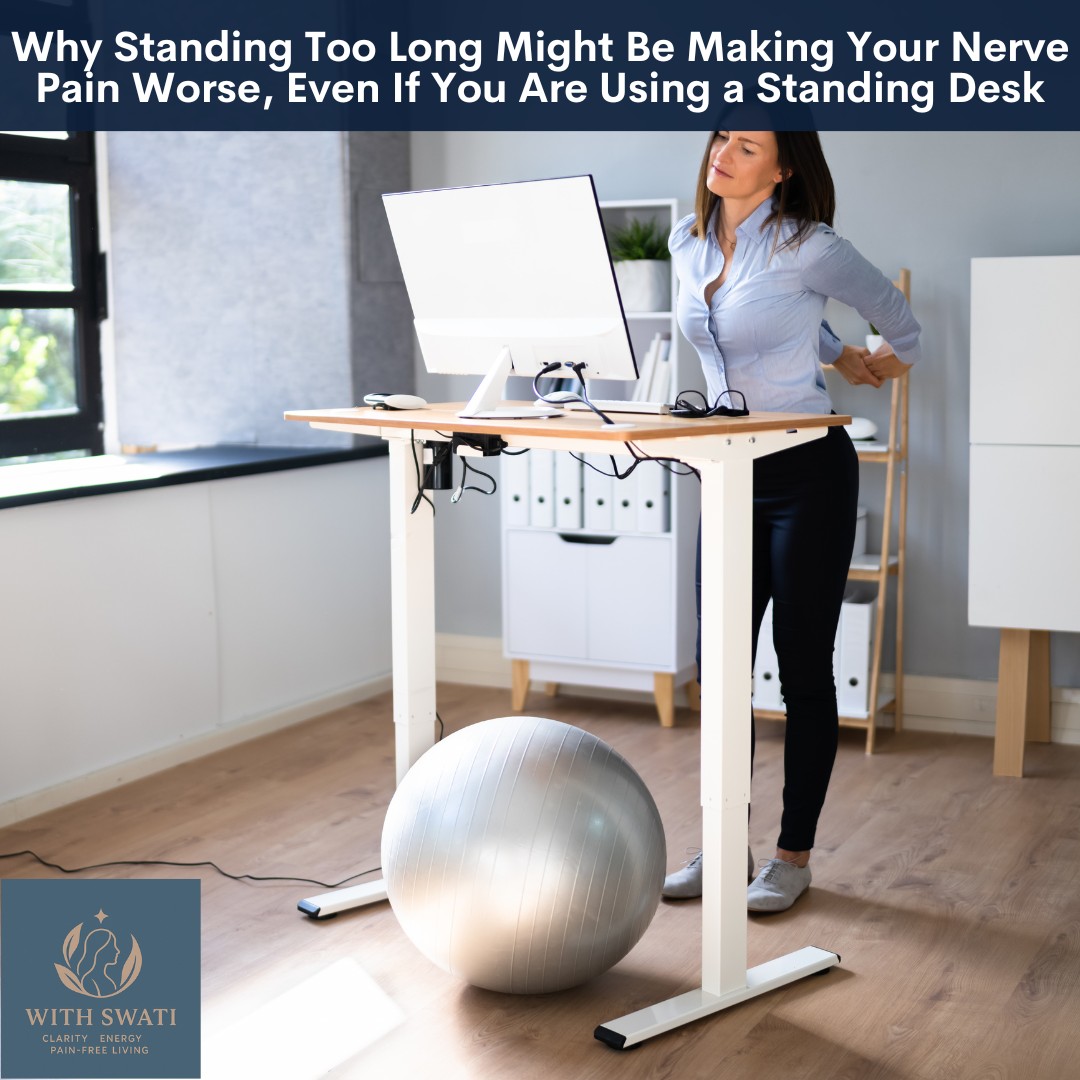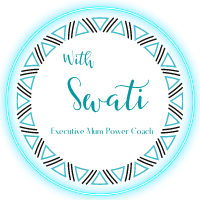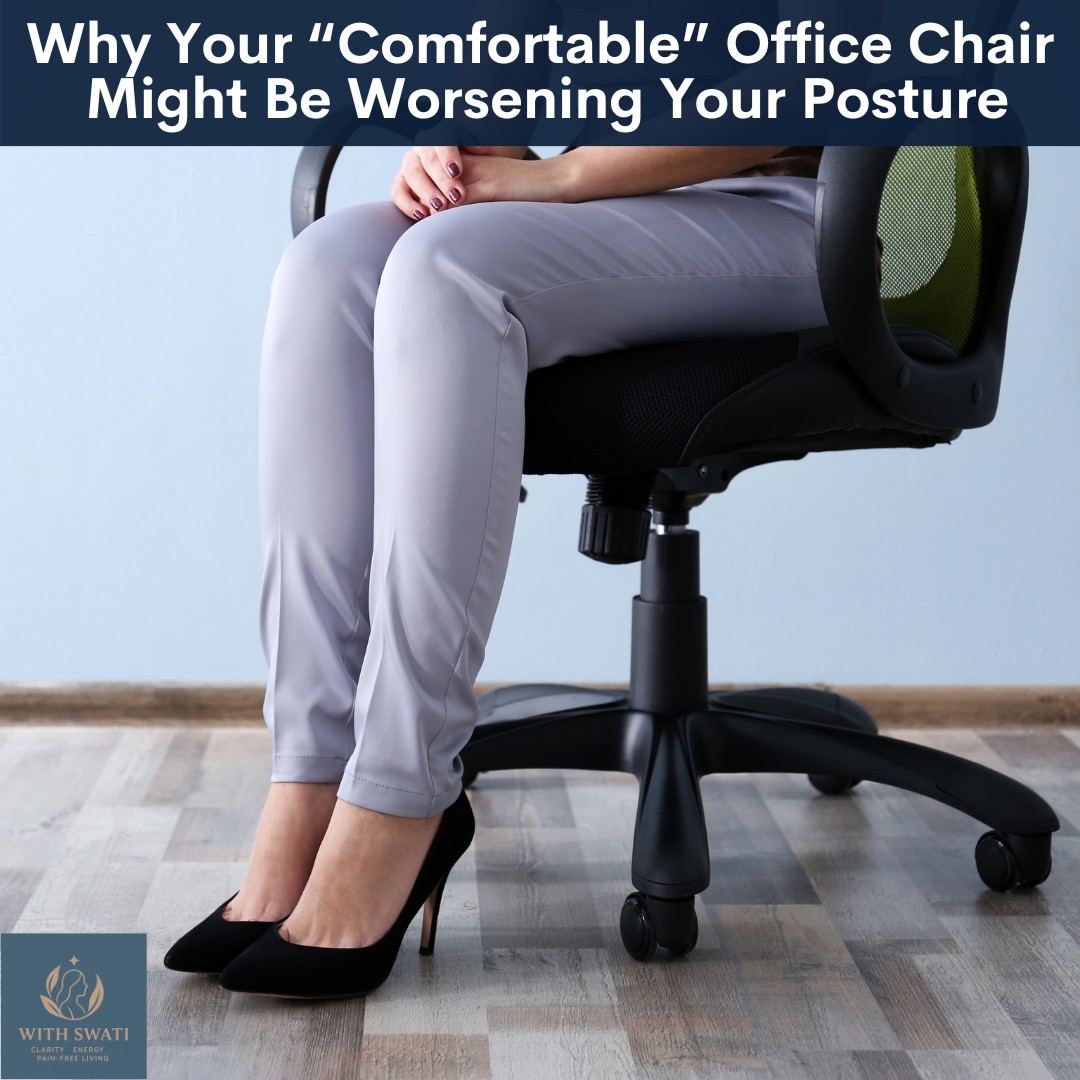
Many mums try to stay productive at their standing desk or rush through chores after work, only to feel that familiar burning or sharp nerve pain creep in by mid-afternoon. It’s frustrating, especially when you are doing all the ‘right’ things. But its not just about what you do, its about how you do it. I have also been there, trying to stay productive while standing, only to feel that familiar nerve pain creeping in. And I have learned that nerve pain isn’t just about movement. It’s about how we move and how long we hold ourselves in certain positions, without realising it. In this blog lets discuss how standing for too long may be making your nerve pain worse.
We are told that sitting is the new smoking, right? So naturally, standing seems like the solution. Standing is a good solution but for women already dealing with spinal or nerve pain, especially after pregnancy or years of posture compensation, standing in one spot too long can actually compress the nerves even more.
Static Standing = Compressed Nerves:
Standing in one position for too long makes your muscles tighten and compresses the joints and nerves, especially in the lower back and legs. This can then translate into mid back and neck pain too.
Standing in one position for too long makes your muscles tighten and compresses the joints and nerves, especially in the lower back and legs. This can then translate into mid back and neck pain too.
Try this instead: Shift your weight every 10 minutes. Try gentle side-to-side rocking, bend one knee slightly, or prop one foot on a small stool to keep your hips and spine moving.
Locked Knees & Tucked Hips = More Strain:
Many women unknowingly lock their knees or shift their pelvis while standing, which increases pressure on the spine and aggravates nerve pathways. This is specially true for those who use standing desks for prolonged hours.
Many women unknowingly lock their knees or shift their pelvis while standing, which increases pressure on the spine and aggravates nerve pathways. This is specially true for those who use standing desks for prolonged hours.
Try this instead: Keep your knees soft and your pelvis gently tucked. Think tall and relaxed, not stiff and braced. Use an adjustable standing desk that gives you the freedom to alternate between sitting and standing, to avoid the build up of stresses on your spine.
Hard Floors = Higher Impact on Joints:
Standing on hard surfaces for long periods increases impact on your feet, knees, and back, which can irritate your already sensitive nerves.
Standing on hard surfaces for long periods increases impact on your feet, knees, and back, which can irritate your already sensitive nerves.
No Movement = Tense Muscles & Angry Nerves:
Your nervous system thrives on gentle, consistent movement, not long hours of stillness.
Your nervous system thrives on gentle, consistent movement, not long hours of stillness.
Try this instead: Take a short movement break every hour. Walk around, do some easy desk based exercises to keep everything mobile and calm.
Weak Glutes & Core Leave You Vulnerable:
If your deep core and glutes aren’t supporting you, your lower back and hips bear the brunt. This can lead to nerve compression, inflammation, and shooting pain, especially with long bouts of standing.
Try this instead: Incorporate quick core activations and glute squeezes during your breaks.
HERE is a free guide on Quick Office Stretches for Nerve Pain Relief where you can get some simple solutions to manage your sciatica. It is a comprehensive resource that provides simple yet effective stretches that you can perform right at your desk to alleviate pain, tingling, and numbness associated with nerve issues.
If you like this blog and want to be notified about new blogs as soon as they are published, subscribe to my mailing list below.
I would love to see you around the internet! For other places you can explore more about me: https://withswati.com/page/link
















0 Comments